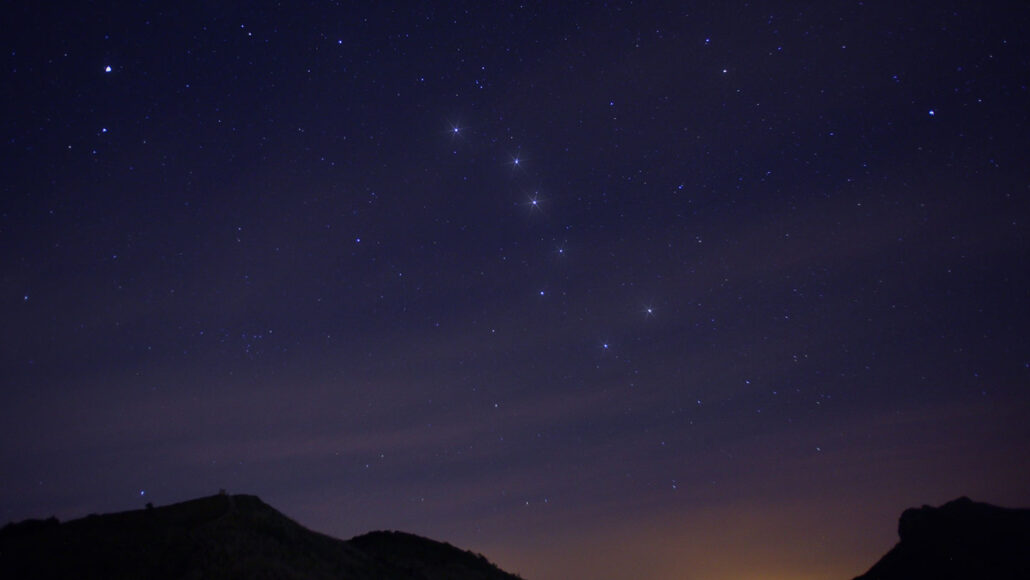Why Do Stars Tend to Form in Groups
It takes millions of years for particle clouds to turn into stars. The distribution of self-gravitating masses near the sonic length is then imprinted by fluctuations on larger scales.

When Is A Group Of Stars Not A Galaxy New Scientist
As they spin they take on mass which increases their heat.

. If the large clouds have some initial turbulent motions. We received this question from Lloyd via the forum Chris Smith put it to Astrophysicist Matt Bothwell. Briefly describe the basic chain of events leading to the formation of a.
This phenomenon is called supernova induced star formation. In these simulations the sinks stars continue to accumulate mass until their environments are depleted. The sinks stars tend to collect together into small groups or mini-clusters because they tend to form together in regions of high density and because they also tend to fall in toward each other as they accumulate mass.
Stars tend to form in groups because of where star formation occurs. This growing temperature provides enlarged pressure that stops merging. Why do stars tend to form in groups.
Clustered star formation is a generic consequence of supersonic turbulence if most of the power in the velocity field hence the contribution to density fluctuations comes from large scales h. This force origins from a growing temperature in the zone of their contact. Moreover stars are responsible for the manufacture and distribution of heavy elements such.
Why do stars tend to form in groups. A star will evolve off the main sequence when it uses up. 10000000 K What event must occur for a protostar to become a full-fledged star.
The age distribution and composition of the stars in a galaxy trace the history dynamics and evolution of that galaxy. Heres why humans chose particular groups of stars as constellations Scientists simulate how humans trace patterns in the night sky Patterns of human eye movement are among several factors that. The long standing view on the formation of stars is that they form in clusters.
Stars and planets formation A star begins its life as a vast cloud of gas and dust drifting among the apparently empty spaces clouds of sparse material are truly immense with span hundreds or thousands of light years in all. A large interstellar cloud fragments into smaller clouds that eventually form stars. This is why you see more star forming regions and collections of young stars open clusters in spiral arms than in other parts of a spiral galaxy.
This allows a type of stellar coherence young stars are found near other young stars to build up and is responsible for. A large interstellar cloud fragments into smaller clouds that eventually form stars. Stars in clusters are useful to aid our understanding of stellar evolution because within a given cluster stars are all roughly the same age and chemical composition and lie at roughly the same distance from Earth.
Star clusters form after star formation is completed and stars start to swirl around one another. Stars are mostly made of hydrogen and helium. While astronomers once thought.
It could be that this turbulence causes massive stars to form in groups of two or more. Why do stars tend to form in groups. The onset of hydrogen fusion.
A large interstellar cloud fragments into smaller clouds that eventually form stars. Stars do not normally form in groups. The spiral arms in spiral galaxies are one type of environment where gravity is pushing gas and dust to form stars more efficiently than in other parts of a spiral galaxy.
Stars are giant balls of gas that form when particle clouds in space start to group together and spin. A large interstellar cloud fragments into smaller clouds that eventually form stars. Why do stars tend to form in groups.
The very massive stars form first and explode into supernova. A grouping of any where from a dozen to a million stars that formed at he same time from the same cloud of interstellar gas. What temperature is required to initiate nuclear fusion in a stellar core.
If they accumulate enough mass in these star-forming regions some stars are pulled toward each other by gravity forming pairs multiple systems or star clusters. The large globular clusters found orbiting galaxies may have hundreds of thousands or millions of stars including some of the oldest stars yet observed. A grouping of any where from a dozen to a million stars that formed at he same time from the same cloud of interstellar gas.
Based on observation and theoretical models many stars are born in clusters groups of ten or more stars that were formed from the same interstellar cloud. This theory is supported by understanding of the formation process that requires large clouds of gas and dust to be. Stars are the most widely recognized astronomical objects and represent the most fundamental building blocks of galaxies.
This makes shock waves into the molecular cloud causing nearby gas to compress and form more stars. Stars and planets are a part of a star system and many of these star system come together to create a galaxy and all this happens because of gravity. Stars form within a molecular cloud where protostars begin to take shape in areas rich in molecular gases and dust.
When stars begin to form they gravitationally attract one another.

Here S Why Humans Chose Particular Groups Of Stars As Constellations Science News

Galaxies Like Stars Frequently Form Groups A Group Of Galaxies Is A System Containing More Than Two Galaxies But Less Galaxies Astronomy Space And Astronomy

Click On The Image To View The High Definition Version Create Infographics At Http Venngage Com Process Infographic How To Create Infographics Infographic

Comments
Post a Comment